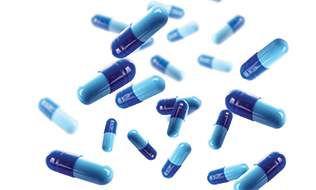

Costs for expensive and recurring drug treatments increased by about 22 per cent between 2014 to 2015, according to new data published by the Canadian Drug Insurance Pooling Corp.
Overall, the report found those costs increased to $228.7 million in 2015 from $187.9 million the year before, with autoimmune-related diseases continuing to be the leading driver of high-cost drug use and newer drugs for Hepatitis C, cancer and blood disorders also having a significant impact on industry pooling costs.
“It’s clear that the strain on the system from expensive and recurring drug costs continues to dramatically outpace the rate of inflation,” said Dan Berty, executive director of pooling organization, in a press release.
According to the report, the top five drugs by spend among 54 pooled drugs are Remicade, Harvoni, Sovaldi, Humira and Soliris.
Read: Healthy Outcomes: Getting a better handle on chronic disease
Soliris is used to treat a rare chronic blood disease while Remicade and Humira are drugs that treat symptoms of rheumatoid arthritis, Crohn’s disease and ulcerative colitis.
However, the standings of the latter drugs may change in the future, as lower cost alternatives to both drugs will soon be available, according to Mike Sullivan, president of Cubic Health, an analytics and drug plan management company in Toronto.
Remicade has a biosimilar that’s less expensive, he says, adding that the entry of such alternatives will likely lead to better pricing for the biologics and will make the market more competitive.
Read: How can employers do a better job of accommodating staff with chronic disease?
Hepatitis C drugs Harvoni and Sovaldi were also top drivers of claims, according to the report. Harvoni, in particular, saw the highest surge in paid claims, to $42 million in 2015 from $3 million in 2014.
Hepatitis C drugs, such as Harvoni, were akin to the “iPhone 6 or 7” when they came on the market, says Sullivan. “Everyone knew these drugs were coming to market and they were going to be big game changers.
“If you had Hepatitis C, all of a sudden you were going to have these tablets that you could take for 12 weeks and be cured with almost no side-effects. So what was happening were people who knew they had Hepatitis C were waiting for these drugs to come on the market and when they finally came in late 2014, people started using them in really high numbers.”
Read: Hepatitis C among key diseases affecting companies’ bottom lines
However, Sullivan notes that while usage of these Hepatitis C drugs escalated to a peak between 2014 and 2015, usage will start declining in 2016 and continue to do so in 2017. In fact, he has already seen a significant drop in claims for Hepatitis C drugs in recent months.
The report’s data is interesting, says Sullivan, because he has “never seen it, where one year you didn’t have the medications, the next year the demand was off the roof and the following year the demand fell again to this degree.”
“The important thing for people to think about is this is really uncharted territory in high-cost claims.”
Read: Electronic prescribing among digital innovations expected to boost health outcomes
